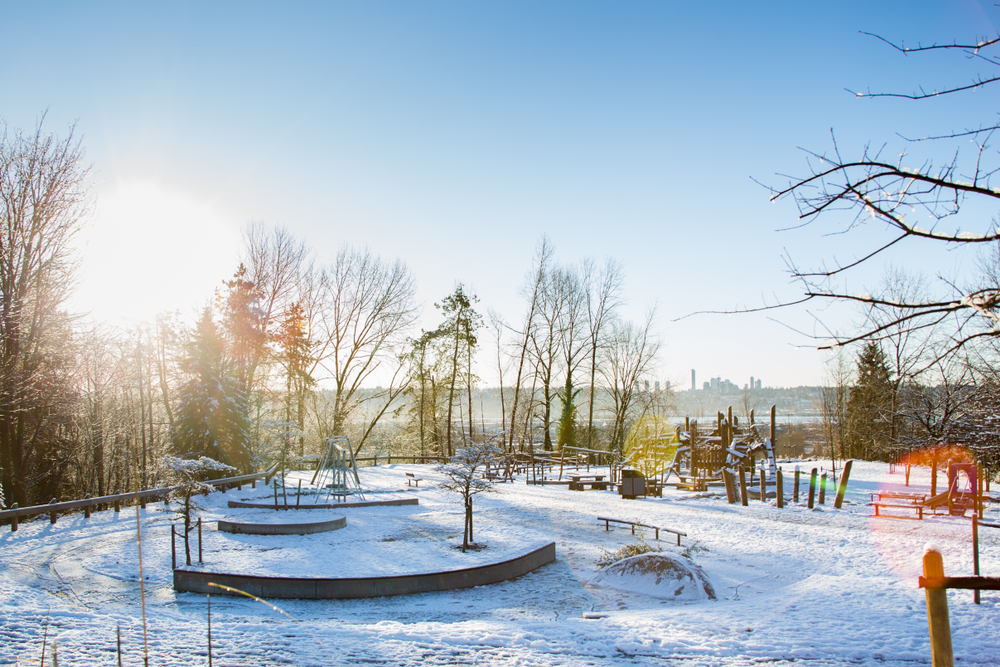
VANCOUVER—Cities across Canada are rethinking their park spaces as play changes, replacing teeter-totters, golf courses and baseball diamonds with space for cricket, pickleball and play structures for all ages.
Coquitlam has set a goal of having a park or greenspace within a five-minute walk of all residents. The Metro Vancouver suburb recently redeveloped Rochester Park with a natural wood playground, zipline, trails, and sheltered picnic space in an example of how the city is trying to meet diverse needs and interests.
Andre Isakov, the city’s park planning and design manager, said as Coquitlam grows, there is increased pressure on parks to become community gathering spaces.
“More and more people today live in multifamily housing. More and more kids don’t have access to backyards so really parks are becoming critical and essential to rediscovering the outdoors,” he said.
Parents often ask for a range of activities so children of all ages can find something to do and space for themselves to socialize, he said. With an aging population, catering to the needs of seniors and pet owners are increasingly a priority, he added.
“People also want to have spaces that allow somebody without children or grandchildren to be able to have a picnic in the park or take a book outside and read a book or take a dog for a walk or walk themselves,” he said.
Isakov said with a school next to Rochester Park and part of the field co-owned by the school district, having youth and children consulted on the design was a priority.
“One of the things we heard from the children and the school is they want to feel physically challenged,” he said.
The log playground and climbing wall provides higher risk activities and challenges for children of all ages, while still meeting safety standards, Isakov said.
Alex Smith, a Halifax parent who founded the blog Playgroundology, said there has been a shift around North America in recent years to design playgrounds that look more like the natural environment and add increased risk to play.
Teeter-totters and roundabouts are disappearing while more unpredictable climbing towers made of wood are being added to parks, he said.
“Nobody wants to see their kid injured but we’ve gone really a bit over the top with that,” he said. “Risk is different than a hazard. … We safeguard children against hazards but risk is something we encounter throughout life and risk is something adults and children learn from.”
Vancouver’s Board of Parks and Recreation is in the midst of consultation on a new master plan for the next 25 year. The board’s website says early feedback indicates that while parks, beaches and trails are popular, interest in golf courses and community gardens is low.
William Connell Park in Hamilton will incorporate equipment by Earthscape as part of its redevelopment. Landscape architect Meghan Stewart said the city wanted the new amenities to balance existing, traditional playground equipment.
“In a lot of communities there’s actually a lot of interest in moving to natural play … compared with the off-the-shelf metal and plastic components we tend to put in,” she said.
Stewart said the city is also adapting to changing tastes in sporting facilities.
Baseball diamonds were once a standard feature in parks but with interest on the decline, the city is changing existing facilities and making space for more popular sports, such as soccer, cricket and pickleball.
“These are spaces that people care about and they want to use them and if you don’t provide them with things they are interested in using, then they tend to become spaces that go unused,” Stewart said.
Laura Hilliard of Ontario-based playground developer Earthscape said municipalities and schools across the country are increasingly looking for unique equipment that isn’t easy to master.
“If you don’t actually allow kids to challenge themselves in playgrounds and to fall and scrape their knee … if you don’t give them those opportunities to assess risk, they’re more likely to injure themselves,” she said.